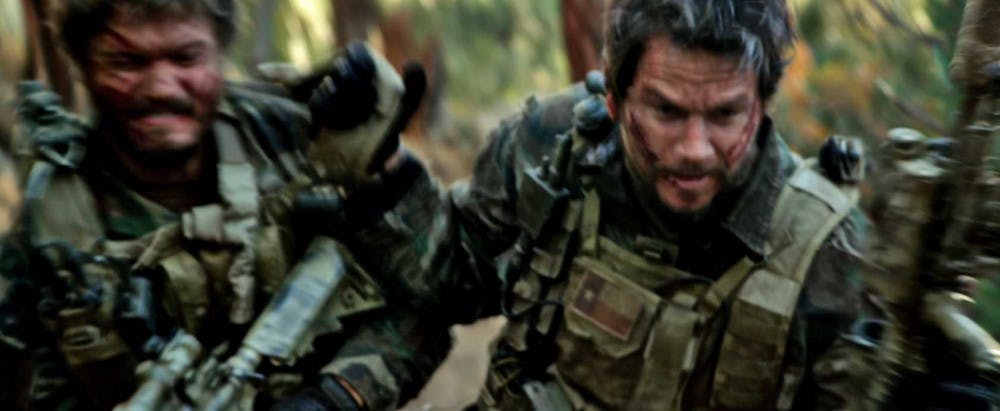Violent account of heroism undermined by cliches
Paul Berg (“Fright Night Lights” (2004), “The Kingdom” (2007)) wrote and directed “Lone Survivor,” a visceral account of the failed 2005 Navy SEAL mission “Operation Red Wings” in Afghanistan.
Four Seals were sent into the Hindu Kush mountains to apprehend a Taliban leader named Ahmad Shah, who had been killing American soldiers.
As the title suggests and the opening scene attests, the mission goes horribly wrong, and only Marcus Luttrell (Mark Wahlberg) survives. The other men who died were Lt. Michael P. “Murph” Murphy (Taylor Kitsch), Gunner’s Mate Danny Dietz (Emile Hirsch) and Sonar Technician Matthew “Axe” Axelson (Ben Foster). Their commanding officer, Erik S. Kristensen (Eric Bana), died along with sixteen other men in a helicopter crash trying to rescue them.
The film quickly gets the four men into the mountains on their mission, and before long, they have trouble sending radio signals to Kristensen back on base. An old man and two younger men stumble upon the SEALs and disrupt their mission. Weighing their options, they decide to let the Afghans go and retreat.
Unfortunately, before a helicopter can come in to pick them up, the Taliban is surrounding the small team, and the next 45 minutes or so of the film depict in graphic, painful detail their fight and — for all but Luttrell — their deaths.
The film shows how much U.S. troops go through to serve their country and how often they do so for unworthy causes. These young men were in a country the U.S. had no business in and lost their lives because of poor communication and planning. What happens to the soldiers will make most viewers’ blood boil. Viewers’ political views might affect what they take away from the film.
The film conveys a deep respect for the troops but also a sense of profound sadness and loss. Even though the film portrays the soldiers as uncompromising in their bravery and commitment, it becomes an anti-war statement.
The action scenes, which take up large sections of the film, are heart-racing and intense. All of the commotion is staged so that the viewer can always tell what is happening and how the separate areas of action are taking place spatially and temporally while always retaining the hectic nature of the fighting. The contrast of the serene mountain silence and the deafening whizzing of bullets adds to the realism, unsettling the viewer.
Too often, however, the film resorts to amped-up action movie clichés that turn the true-life heroes into invincible killing machines long past a realistic point, given their wounds and how outnumbered they were. In the real mission, could the men really crash down the mountainside repeatedly, get up and still gun down a dozen Taliban members?
In the mix of harrowing battle, the director slows down and shows certain deaths in slow motion artiness complete with sun flares on the camera. The film could have done without some of the cinematography and heroics that make the soldiers seem saintly when the point is to show them as brave but human.
Much more effective is the death of Axelson as he lies dying against a tree with the Taliban shooting bullets towards his head until they make the kill shot. The blunt realism is more emotionally powerful and honest than the overly dramatic slow-motion deaths.
“Lone Survivor” works as an angry, violent account of war with fierce action filmmaking, even if it resorts to unnecessary action movie tropes that make the soldiers overly indestructible, undermining some of its impact.

